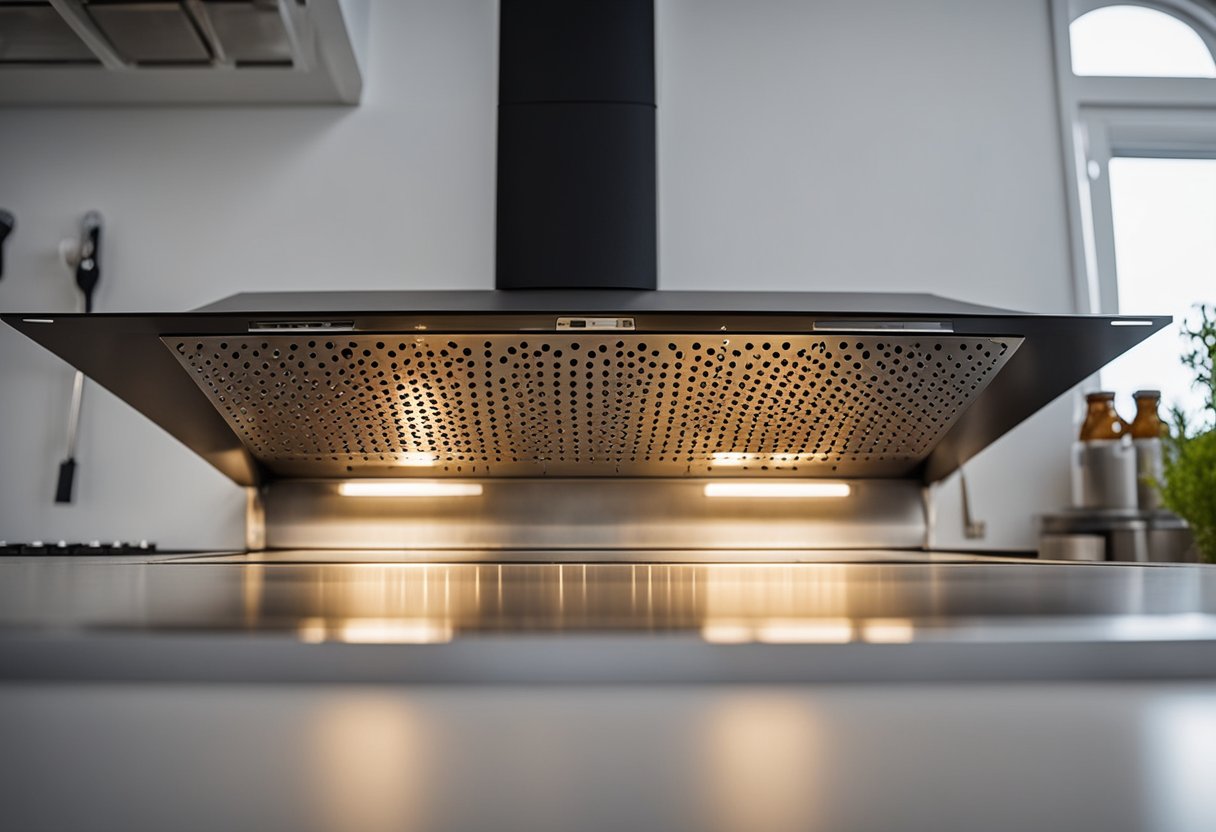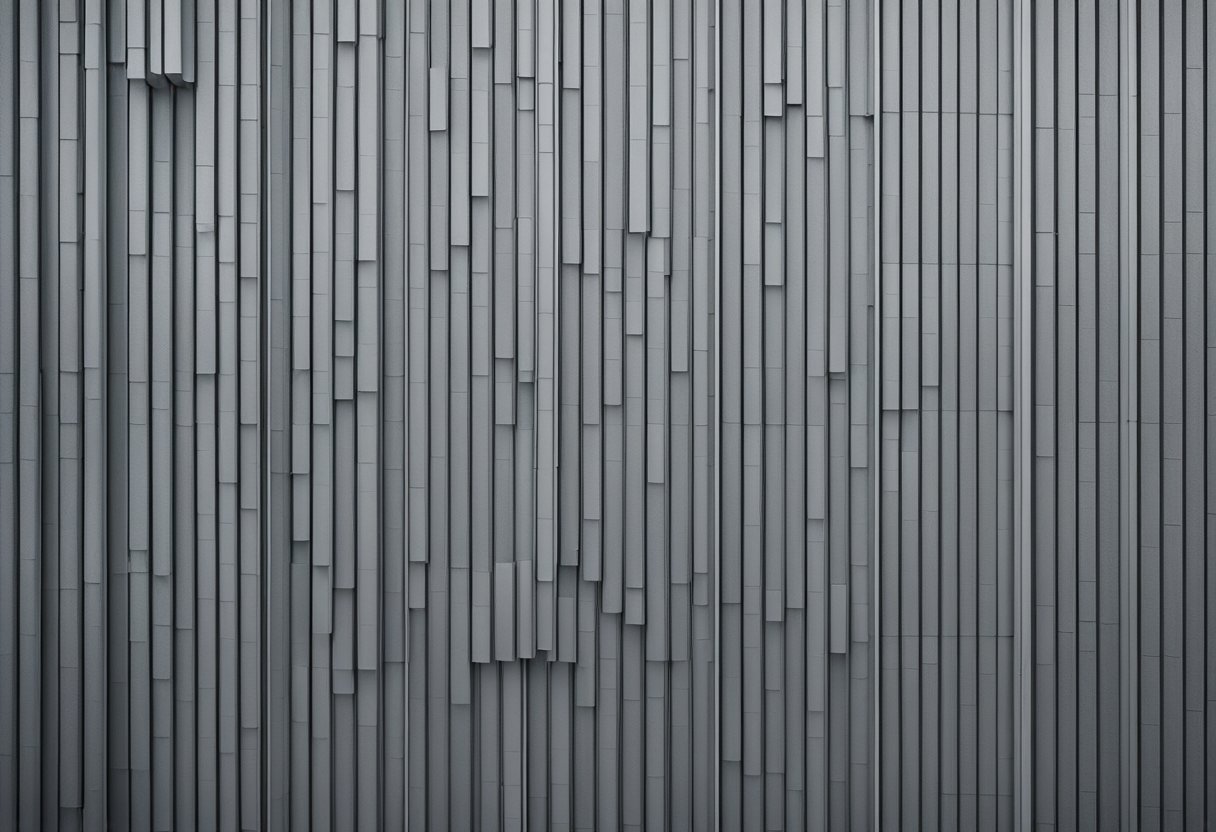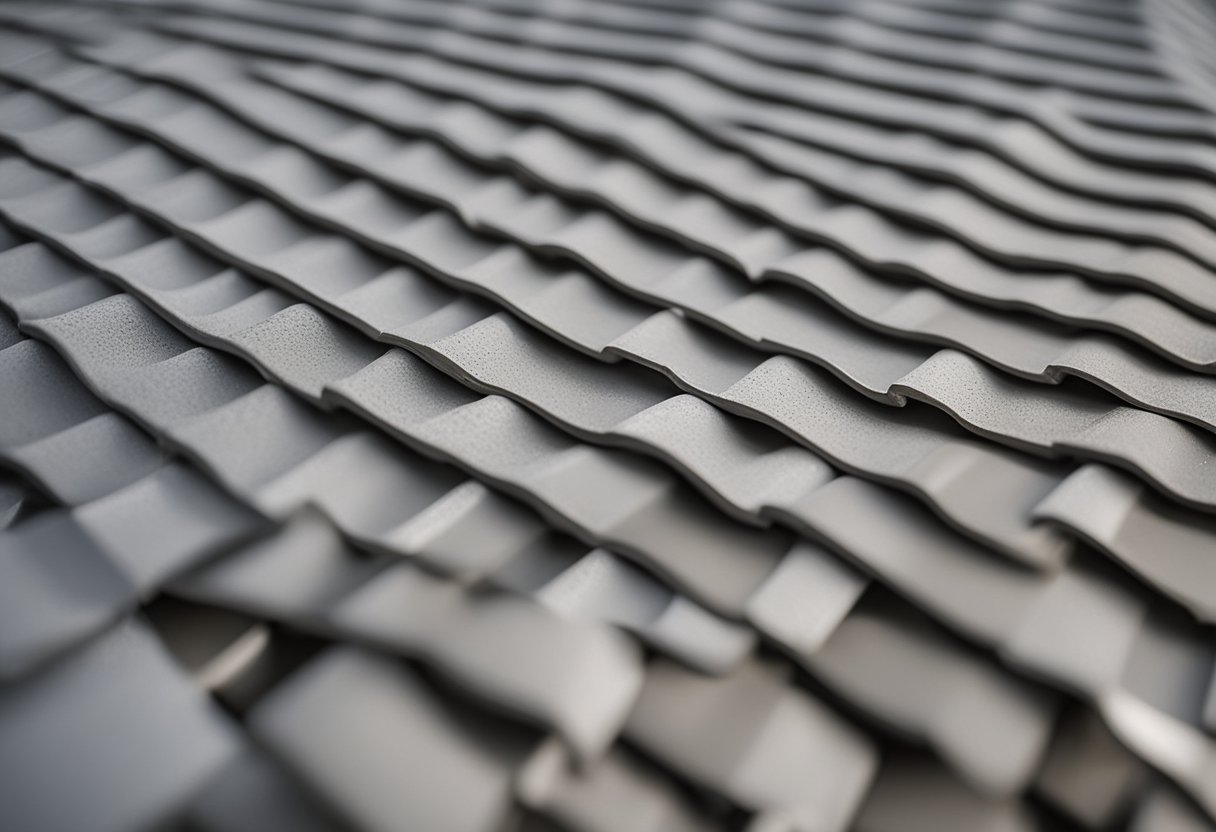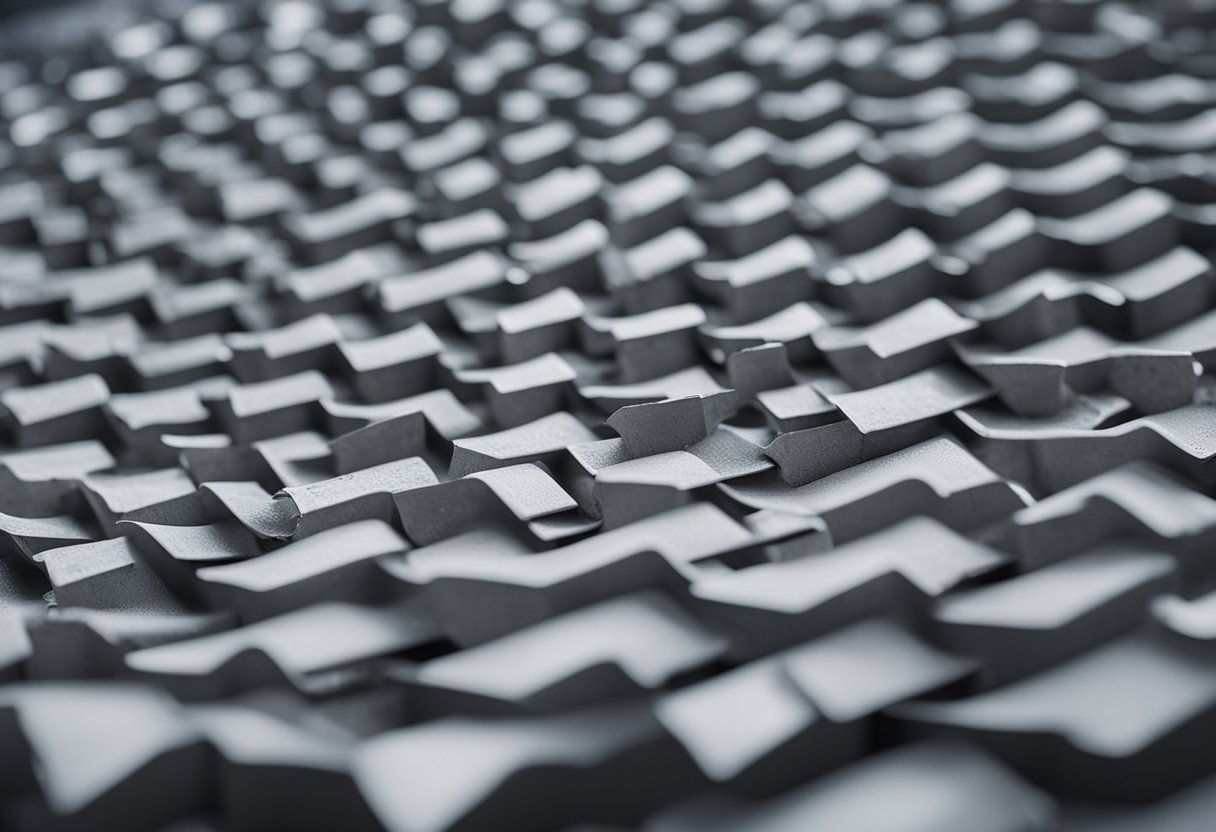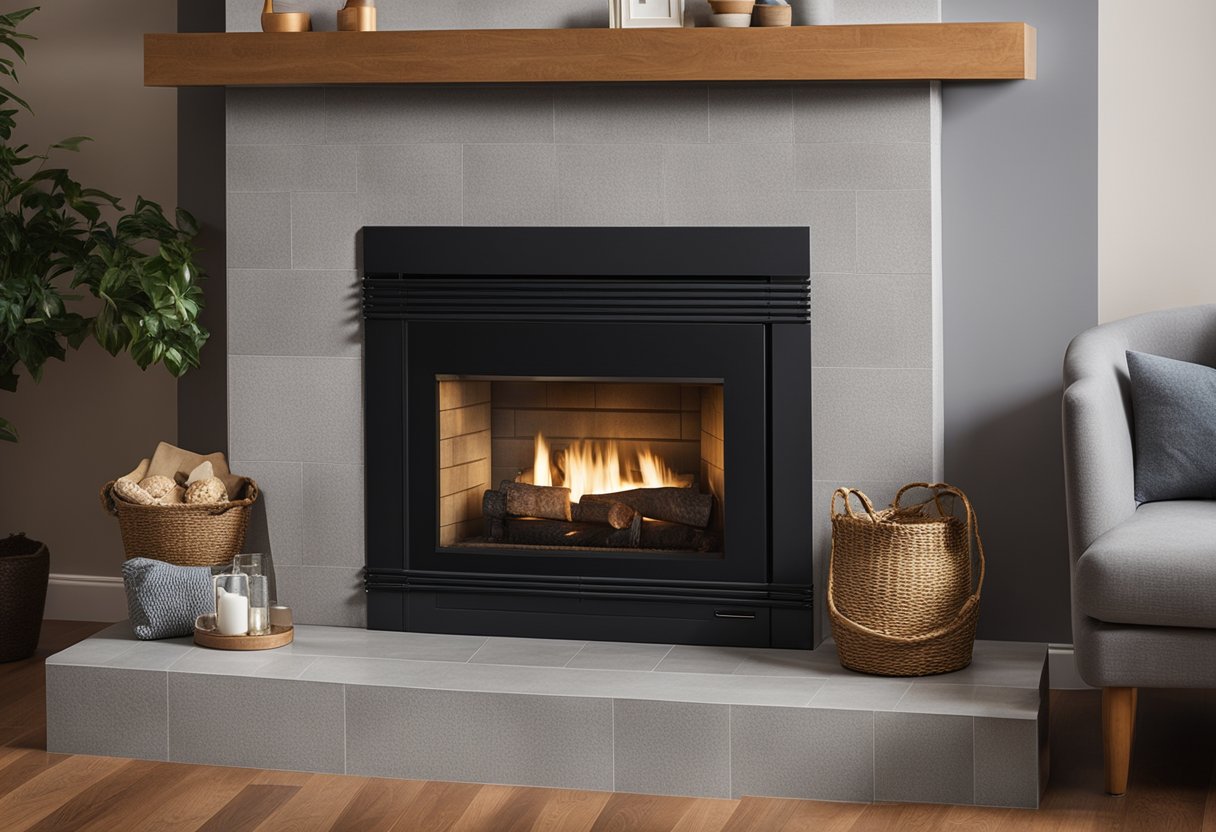As someone who enjoys the warmth and ambiance of a wood stove, I understand the importance of having a proper heat shield installed. A heat shield not only protects your walls and floors from the high temperatures generated by the stove, but it also ensures your safety and peace of mind. One of the most effective and affordable materials to use for a heat shield is cement board.
Understanding Cement Board Heat Shields
Cement board is a type of building material that is made from cement, water, and fiber reinforcement. It is commonly used as a substrate for ceramic, porcelain, or stone tile installations, but it can also be used as a heat shield. Cement board is an excellent choice for a heat shield because it is fire-resistant, durable, and easy to install. It can be cut to size with a utility knife or saw, and it can be attached to the wall using screws or adhesive.
Importance of Heat Shields
Installing a heat shield behind your wood stove is essential for protecting your home and your family from the dangers of high heat. Without a heat shield, the walls and floors surrounding your stove can become damaged or even catch fire. A properly installed heat shield made from cement board can prevent this from happening and give you peace of mind knowing that your home is safe.
Key Takeaways
- Cement board is an effective and affordable material for a heat shield.
- A heat shield made from cement board is fire-resistant, durable, and easy to install.
- Installing a heat shield made from cement board is essential for protecting your home and family from the dangers of high heat.
Understanding Cement Board Heat Shields
https://www.youtube.com/watch?v=cC5jfVcTYEE&embed=true
As a construction material, cement board has become increasingly popular due to its ability to withstand heat and fire. It is commonly used as a heat shield, particularly in areas where there is a risk of fire or high temperatures. In this section, I will discuss what cement board heat shields are, how they work, and why they are an essential component of any fireproof construction project.
Cement board heat shields are panels made from a combination of cement and fibers that are designed to provide insulation and protection against heat. They are typically used to protect walls, floors, and other surfaces from heat generated by fireplaces, wood stoves, and other heating appliances. Cement board heat shields are also used to protect against radiant heat, which can be a significant cause of damage in a fire.
The main advantage of cement board heat shields is their fireproof nature. Cement board is made from non-combustible materials, which means that it will not catch fire or contribute to the spread of flames. This makes cement board heat shields an essential component of any fireproof construction project, particularly in areas where there is a high risk of fire or where fire safety regulations require the use of fireproof materials.
Cement board heat shields are also highly durable and resistant to wear and tear. They are designed to withstand high temperatures and are not affected by moisture or humidity, which makes them ideal for use in areas where there is a risk of water damage. Additionally, cement board heat shields are easy to install and require minimal maintenance, which makes them a cost-effective solution for fireproof construction projects.
In summary, cement board heat shields are an essential component of any fireproof construction project. They provide insulation and protection against heat and are made from non-combustible materials, which makes them an ideal solution for areas where there is a high risk of fire. Additionally, cement board heat shields are highly durable and easy to install, which makes them a cost-effective solution for fireproof construction projects.
Importance of Heat Shields
https://www.youtube.com/watch?v=q4kktI80i4M&embed=true
As someone who has worked with various heating appliances, I know firsthand the importance of heat shields. A heat shield is a material that prevents heat from damaging other materials or surfaces, especially those that are prone to combustion. Heat shields are particularly important when it comes to stoves, fireplaces, and wood stoves, which generate high temperatures that can easily cause damage or even start a fire.
One of the main benefits of heat shields is that they allow for the placement of heating appliances closer to the wall. This is especially important in smaller spaces where every inch counts. Heat shields can reduce the required distance between the appliance and the wall, making it possible to install the appliance in tighter spaces.
Heat shields are also essential for protecting combustible materials from high temperatures. For example, if you have a wood stove, a heat shield can protect the wall behind it from catching fire due to the high temperatures generated by the stove. Similarly, if you have a fireplace, a heat shield can protect the surrounding materials from getting too hot and possibly igniting.
There are different types of heat shields available, but cement board is one of the most popular choices. Cement board is a highly durable material that is resistant to heat and fire. It is an excellent choice for heat shields because it can withstand high temperatures without deteriorating or catching fire. In fact, cement board is deemed noncombustible when tested to ASTM E 136 and can be used in conjunction with other noncombustible materials around a fireplace.
Overall, heat shields are an essential component of any heating appliance. They protect against damage and fire, allow for closer placement of appliances, and provide peace of mind for homeowners. When choosing a heat shield, consider the type of appliance you have and the materials surrounding it. Cement board is a reliable and durable option that is well-suited for many applications.
Installation Process
https://www.youtube.com/watch?v=8vWtUVmpvHQ&embed=true
Installing a cement board heat shield is an easy process that can be done by any DIY enthusiast. Here are the steps to follow:
Step 1: Measure the Area
Before installing the Hardi cement board heat shield, accurately measure the area where you plan to place it. Use a measuring tape to determine the height and width of the space.
Step 2: Cut the Cement Board
Cut the Hardi cement board to fit the measured dimensions using a circular saw or a scoring tool. Make sure to leave a small gap between the board and the wall for expansion.
Step 3: Placement
Position the cement board on the wall where you want it to be. Ensure that it is level and plumb before proceeding to the next step.
Step 4: Screw the Cement Board to the Wall
Attach the cement board to the wall using screws and a drill. Drill pilot holes through 2-inch by 2-inch by 8-foot pieces of lumber every 12 inches using an electric drill and a drill bit smaller in diameter than the screws. One piece of lumber is required for each wall stud that will be covered by the Hardi cement board. Shorten them if the heat shield will not cover the wall from floor to ceiling.
Step 5: Insulation
If you want to add extra insulation, you can install it between the cement board and the wall. This will help to increase the heat resistance of the heat shield.
Overall, the installation process of a cement board heat shield is straightforward and easy to follow. With the right tools and materials, you can have your heat shield installed in no time.
Regulations and Standards
As a building material, cement board is subject to various regulations and standards. One of the most important standards is the UL listing, which ensures that the material meets certain safety requirements. UL listed cement board heat shields are tested to withstand high temperatures and are approved for use in various applications, including protecting walls and floors from heat sources.
In addition to UL listing, local building codes may require the use of an approved heat shield system to protect adjacent walls from heat and possible combustion. These codes may also specify the required distance between the heat source and the adjacent wall. It is important to consult with local building officials to ensure compliance with all applicable codes and regulations.
When installing a cement board heat shield, it is important to follow the manufacturer’s installation instructions and any applicable building codes. This may include using specific fasteners and sealants, as well as ensuring proper spacing between the cement board and adjacent walls.
Overall, cement board is a safe and effective material for use as a heat shield in various applications. By following all applicable regulations and standards, as well as manufacturer’s instructions, you can ensure a safe and effective installation that protects your walls and floors from heat sources.
Materials and Brands
https://www.youtube.com/watch?v=4zVtSCagSVc&embed=true
When it comes to choosing the right cement board for a heat shield, there are a few materials and brands to consider. The most commonly used material for cement board heat shields is Portland cement. This material is known for its durability and resistance to heat. It is also non-combustible, making it a safe choice for use around wood stoves and fireplaces.
Two popular brands of cement board for heat shields are Durock and PermaBASE®. Durock is a brand of cement board manufactured by USG Corporation. It is a popular choice for heat shields due to its strength and fire-resistant properties. PermaBASE® is another brand of cement board that is exclusive to the National Gypsum Company. This brand is known for its high-quality products manufactured by PermaBASE Building Products, LLC.
Both Durock and PermaBASE® cement board are designed to withstand high temperatures and provide excellent protection against heat. They are also resistant to moisture and mold, making them ideal for use in damp environments such as bathrooms and kitchens.
When choosing a cement board for a heat shield, it is important to consider the specific needs of your project. Factors such as the size of the heat shield, the amount of heat it will be exposed to, and the location of the heat shield will all play a role in determining the best material and brand to use.
Overall, both Durock and PermaBASE® cement board are excellent choices for heat shields due to their durability, fire resistance, and moisture resistance. Whether you are building a heat shield for a wood stove or a fireplace, these brands are sure to provide the protection you need.
Benefits and Performance
As a professional builder, I have found cement board to be the industry-preferred choice for heat shield installation. It is installation-ready and easy-to-use, saving me time and allowing me to focus on other aspects of the project.
Cement board also offers enhanced performance compared to other materials. Its thermal resistance properties make it ideal for safeguarding walls and floors from heat damage. This means that even in high-temperature environments, cement board can provide reliable protection.
When it comes to installation, cement board is easy to measure and cut to the required size. This ensures that the heat shield fits perfectly and provides maximum coverage. Additionally, its lightweight nature makes it easy to handle and install without requiring additional manpower.
Overall, cement board heat shields are a reliable and effective way to protect walls and floors from heat damage. Its enhanced performance and ease of use make it a popular choice among builders and homeowners alike.
Application of Cement Board Heat Shields
https://www.youtube.com/watch?v=ejLBNe6ko9Q&embed=true
As a professional in the construction industry, I have found that cement board heat shields are an effective solution for protecting combustible walls from the heat generated by wood stoves. These heat shields are typically made of non-combustible materials such as cement board, sheet metal or other heat-resistant materials.
When installing a wood stove, it is important to maintain proper clearance from combustible walls. However, cement board heat shields can be used to reduce the required clearance, providing more flexibility in the installation process. The reduction in clearance can be achieved by installing the heat shield on the wall studs behind the stove.
Cement board heat shields are suitable for both interior and exterior use. They can be used not only for wood stove installation, but also for other applications such as countertops. The heat shields are available in various sizes and thicknesses, making it easy to find the right size for any project.
One of the benefits of using cement board heat shields is that they are easy to install. They can be attached to the wall studs using screws or other fasteners. The heat shields can also be cut to size using a saw or other cutting tool.
It is important to note that cement board heat shields are not a substitute for proper installation of a wood stove. The heat shields should be used in conjunction with other safety measures such as proper ventilation and regular maintenance of the stove.
In conclusion, cement board heat shields are an effective solution for reducing clearance requirements and protecting combustible walls from the heat generated by wood stoves. They are easy to install and can be used for a variety of applications.
Exclusive Service Provider
As the exclusive service provider for products manufactured by PermaBASE Building Products, LLC, National Gypsum Company is proud to offer the highest quality cement board heat shield for interior applications. Our cement board heat shield is designed to protect your walls and surrounding areas from heat and combustion, making it the perfect solution for wood-burning fireplaces located near walls.
At National Gypsum Company, we understand the importance of using high-quality materials for your construction projects. That’s why we only work with trusted manufacturers like PermaBASE Building Products, LLC, to bring you the best possible products.
Our cement board heat shield is made with Portland cement, aggregate, and fiberglass mesh, providing a durable surface that can withstand prolonged exposure to heat and moisture. It works well as an underlayment for tub and shower surrounds, countertops, flooring, and a variety of other interior and exterior applications.
We take pride in being the exclusive service provider for PermaBASE Building Products, LLC, and we are confident in the quality of our cement board heat shield. If you have any questions about our products or services, please don’t hesitate to contact us. We are always happy to help.
Frequently Asked Questions
How to install cement board for wood stove?
When installing cement board for a wood stove heat shield, it is important to follow the manufacturer’s instructions and local building codes. Generally, the cement board should be installed at least 1 inch away from the combustible wall and secured to non-combustible spacers. The cement board should be cut to size and attached to the spacers using screws and construction adhesive. A layer of heat-resistant paint or tile can be added for finishing.
Is cement board a thermal barrier?
Cement board can be used as a thermal barrier to protect combustible materials from heat sources such as wood stoves and fireplaces. However, it is important to note that cement board is not a fireproof material and should not be used as a substitute for proper clearance requirements.
What temperature can cement board withstand?
Cement board can withstand temperatures up to 1500°F (815°C), making it a suitable material for use as a heat shield for wood stoves and fireplaces. However, it is important to follow the manufacturer’s instructions for proper installation and clearance requirements.
Does cement board reflect heat?
Cement board does not reflect heat, but rather absorbs and dissipates it. This makes it an effective material for use as a heat shield for wood stoves and fireplaces.
Are DIY heat shield spacers effective?
DIY heat shield spacers can be effective if they are made from non-combustible materials and installed according to local building codes and the manufacturer’s instructions. However, it is important to note that improper installation can lead to a fire hazard.
Can cement board be used as a heat shield for fireplaces?
Cement board can be used as a heat shield for fireplaces, but it is important to follow the manufacturer’s instructions and local building codes for proper installation and clearance requirements. It is also important to note that cement board is not a fireproof material and should not be used as a substitute for proper clearance requirements.

Hi, I’m Sal Muller of Tooltrip.com. My DIY experience led me to understand essential power tools for home projects. Tooltrip.com guides enthusiasts and professionals in choosing right tools for any job. I provide concise top tool reviews for easier, efficient DIY.

